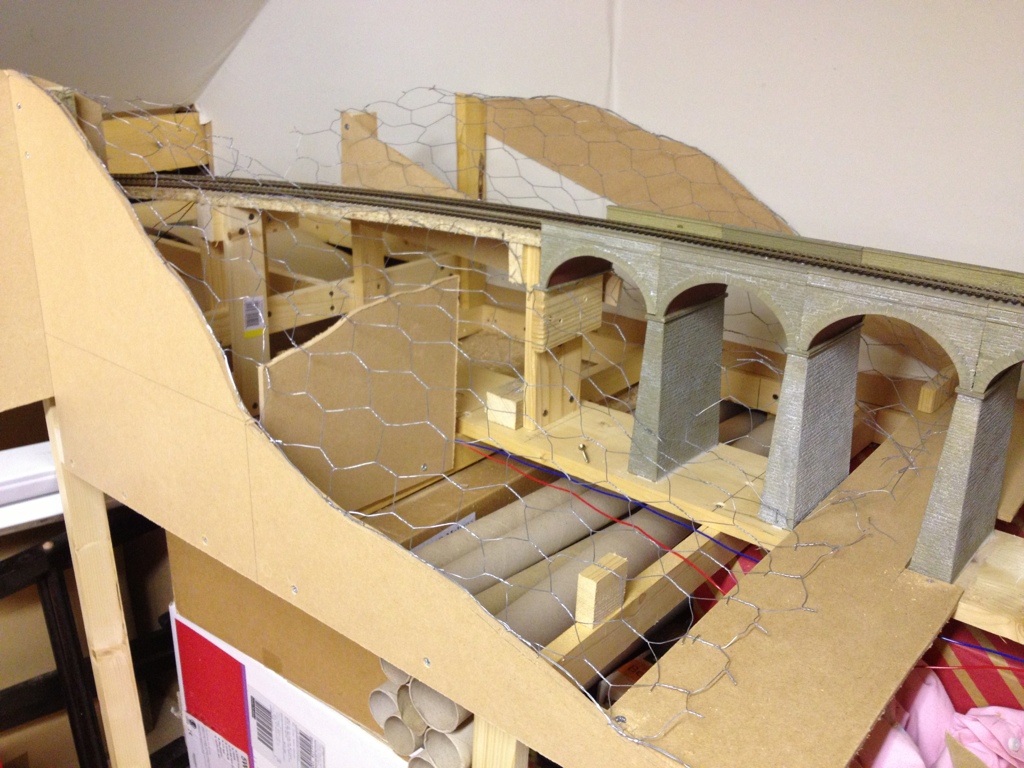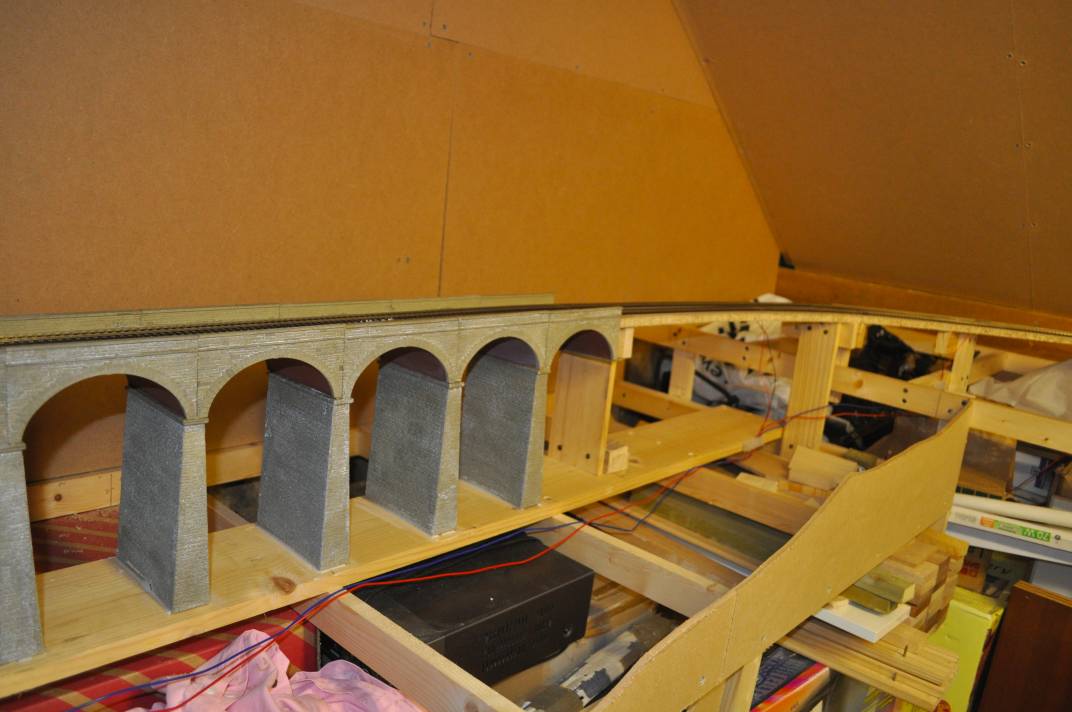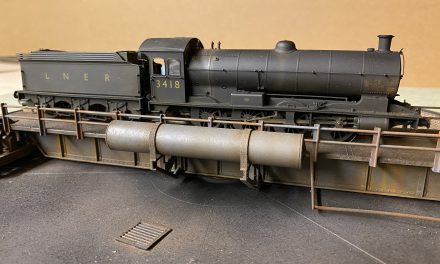Progress on the Rede Valley has been slow. The 2012 project to complete the viaduct diorama is well behind schedule and work commitments have continued to keep me in Nottinghamshire during the week and well away from a railway room in Northumberland. None the less, the basic shape of the scenery is coming together.
One of the next tasks is to add the tunnel entrance. Though on the model this will be where the ficticious Rede Valley line crosses the Anglo Scottish border under Carter Fell it will replicate a real tunnel on the nearest main line. The idea is to create a facsimile of the southern entrance to Whitrope Tunnel to give the section a real Waverley feel.

The thrack curves into the yet to be built tunnel portal and distinctive retaining walls of Whitrope
Whitrope took the Waverley line under the bleak Sandy Edge, which was in the middle of remote wilderness south of Hawick, and was one of the longest tunnels in Scotland. The tunnel under Carter Fell had it ever been built would have been even longer and just as bleak. The failed 1836 scheme surveyed by Joshua Richardson and subsequently condemned by George Stephenson in favour of the coastal route to Edinburgh proposed a tunnel over 8 miles long.
Resarch has revealed some great information about Whitrope.The forgotten relics website has a huge amount of information about tunnels from all over the UK and there are some particularly interesting photographs of both portals and the interior of Whitrope.








Is there a history or background write up about the Rede Valley Railway?
What is the background to the Rede Valley Rail layout?
There is a history, grounded in some fact. A bill was put before parliament in the 1840s for a direct railway from Newcastle to Edinburgh & Glasgow crossing the border at Carter Bar, the source of the River Rede. The scheme was never approved.
The layout is a just supposing, assuming it was built, and ended up joining the Waverley somewhere near St Boswells.
The full story will be documented in a future blog post.